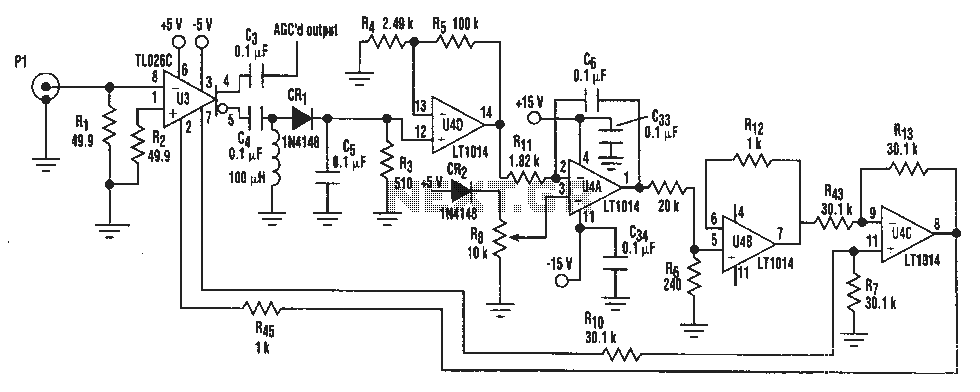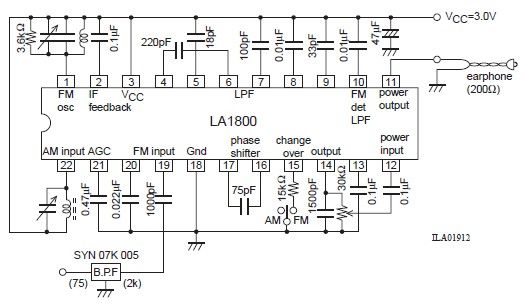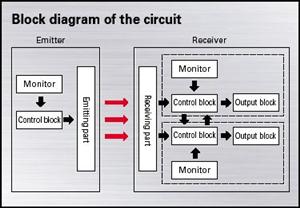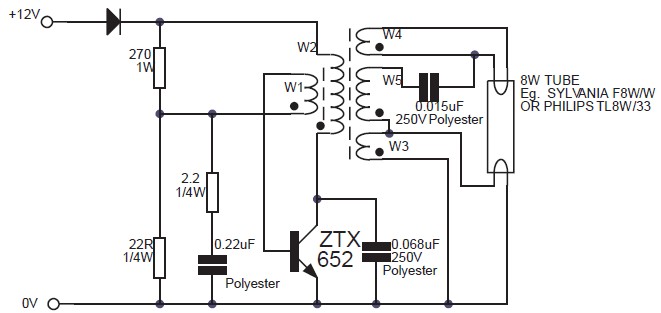
LM317 Regulator Circuit
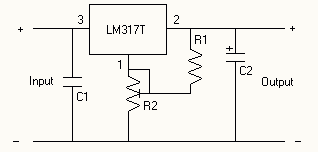
I constructed this voltage regulator to power my two way mobile radio from the car cigarette lighter circuit. It has many other uses and the voltage can easily be adjusted by the use of a potentiometer. The voltage regulator is an LM317T, and should accept up to about 14 volts without problems. It can handle up to 1 amp, but you WILL need a heatsink on the voltage regulator.
The voltage regulator circuit utilizes the LM317T integrated circuit, which is a versatile adjustable voltage regulator capable of providing output voltages ranging from 1.25V to 37V. The LM317T is designed to maintain a stable output voltage despite variations in input voltage and load conditions, making it suitable for applications such as powering two-way mobile radios from a car's cigarette lighter outlet.
The circuit typically consists of the LM317T, a pair of resistors, and a potentiometer to set the desired output voltage. The resistors are connected in a voltage divider configuration, allowing the user to adjust the output voltage by varying the resistance. The formula for calculating the output voltage (Vout) is given by:
Vout = Vref * (1 + R2/R1) + Iadj * R2
Where Vref is approximately 1.25V, R1 is the resistor connected between the output and the adjust pin, and R2 is the resistor connected between the adjust pin and ground. The potentiometer can be used in place of R2 to provide a variable output voltage.
Input voltage to the LM317T should not exceed 14V to prevent damage to the regulator. The device can output a maximum current of 1 amp, which is sufficient for many applications, including powering radios. However, to ensure reliable operation and prevent thermal shutdown, a heatsink must be attached to the LM317T, especially under higher load conditions.
Additional components may include input and output capacitors to improve transient response and stability. A typical configuration would include a 0.1µF capacitor at the input and output terminals of the LM317T to filter out high-frequency noise and ensure stable operation.
Overall, this voltage regulator circuit is a practical solution for converting a higher voltage from a car's electrical system to a stable, adjustable voltage suitable for various electronic devices.I constructed this voltage regulator to power my two way mobile radio from the car cigarette lighter circuit. It has many other uses and the voltage can easily be adjusted by the use of a potentiometer. The voltage regulator is an LM317T, and should accept up to about 14 volts without problems. It can handle up to 1 amp, but you WILL need a heatsink on the voltage regulator. 🔗 External reference
The voltage regulator circuit utilizes the LM317T integrated circuit, which is a versatile adjustable voltage regulator capable of providing output voltages ranging from 1.25V to 37V. The LM317T is designed to maintain a stable output voltage despite variations in input voltage and load conditions, making it suitable for applications such as powering two-way mobile radios from a car's cigarette lighter outlet.
The circuit typically consists of the LM317T, a pair of resistors, and a potentiometer to set the desired output voltage. The resistors are connected in a voltage divider configuration, allowing the user to adjust the output voltage by varying the resistance. The formula for calculating the output voltage (Vout) is given by:
Vout = Vref * (1 + R2/R1) + Iadj * R2
Where Vref is approximately 1.25V, R1 is the resistor connected between the output and the adjust pin, and R2 is the resistor connected between the adjust pin and ground. The potentiometer can be used in place of R2 to provide a variable output voltage.
Input voltage to the LM317T should not exceed 14V to prevent damage to the regulator. The device can output a maximum current of 1 amp, which is sufficient for many applications, including powering radios. However, to ensure reliable operation and prevent thermal shutdown, a heatsink must be attached to the LM317T, especially under higher load conditions.
Additional components may include input and output capacitors to improve transient response and stability. A typical configuration would include a 0.1µF capacitor at the input and output terminals of the LM317T to filter out high-frequency noise and ensure stable operation.
Overall, this voltage regulator circuit is a practical solution for converting a higher voltage from a car's electrical system to a stable, adjustable voltage suitable for various electronic devices.I constructed this voltage regulator to power my two way mobile radio from the car cigarette lighter circuit. It has many other uses and the voltage can easily be adjusted by the use of a potentiometer. The voltage regulator is an LM317T, and should accept up to about 14 volts without problems. It can handle up to 1 amp, but you WILL need a heatsink on the voltage regulator. 🔗 External reference
